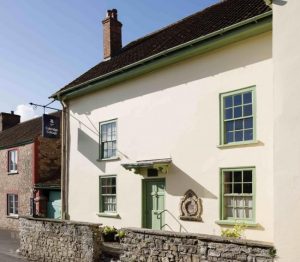Today here at My Poetic Side we take a look at the National Trusts search for footage of Quantock Hills. We also have an article about a research study into the possibility that the poet Robert Burn had bipolar disorder
Footage of Quantock Hills sought by Coleridge Cottage
 The public are being invited to submit video footage of the Quantock Hills to Coleridge Cottage in Nether Stowey as part of a new exhibition.
The public are being invited to submit video footage of the Quantock Hills to Coleridge Cottage in Nether Stowey as part of a new exhibition.
This will be a permanent exhibition titled “Three Extraordinary Years, One Extraordinary Landscape”, that will shed some light on the poet Samuel Taylor Coleridge and how he was inspired to write poetry by the Quantock Hills. Coleridge lived locally to the area at the end of the 18thcentury.
The National Trust are inviting amateur filmmakers and videographers to submit video footage of the Quantock Hills to be showcased in the exhibition, this will be done in the form of a video projection that will give visitors a taste of what the landscape is really like.
Any footage needs to be of a high resolution and show all forms of the landscape. However, it should also take into account that Coleridge lived in the area in the 1790’s so should avoid containing modern features like cars. It should also be free of people but have a natural look. Any footage that shows powerful depictions of light and weather is particularly welcomed.
Robert Burns – Research Suggests He Might have been suffering with Bipolar Disorder
 Some new and interesting research carried out by researchers at the University of Glasgow suggests that the poet Robert Burns may have been suffering with bipolar disorder. The finding of their research has recently been published in the Royal College of Physicians’ Journal (Edinburgh).
Some new and interesting research carried out by researchers at the University of Glasgow suggests that the poet Robert Burns may have been suffering with bipolar disorder. The finding of their research has recently been published in the Royal College of Physicians’ Journal (Edinburgh).
They have analysed over eight hundred journals and letters in an attempt to determine more about the poet’s mental state. The project has taken around 4 years, it began in 2015 and researchers now say that they have evidence that suggests that there is a good chance that Burns did suffer from bipolar disorder; his moods certainly cycled between hypomania and depression.
They say that their discovery could go a long way towards explaining the intense creativity periods that the poet had, together with his personality, which was often temperamental and rather unstable personal life.
In carrying out their research they looked at letters from four individual time frames that spanned the nine-year time period between 1786 and 1795. They tested uses of the letters by the poet as a form of evidence to show his mental state at the time. Their findings were that the poet’s personal correspondence showed clear signs of mood disorder.
They used a first set of letters from a 3 month time period around December 1793 as a control; this is a time when Burns is known to have suffered with melancholia. These letters were used to help them analyse the other letters.
Obviously, they cannot say for certain that Burns was definitely bipolar as he has been dead for over 200 years, but their findings give them some very solid evidence that their suspicions are correct.


You must register to comment. Log in or Register.